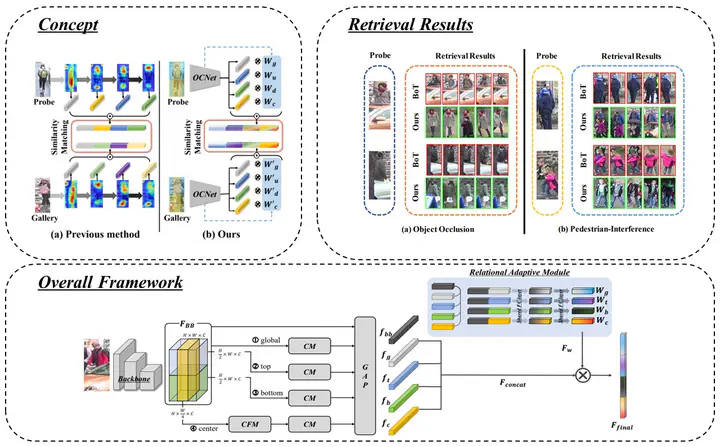Occluded Person Re-Identification Via Relational Adaptive Feature Correction Learning

Abstract
Occluded person re-identification (Re-ID) in images captured by multiple cameras is challenging because the target person is occluded by pedestrians or objects, especially in crowded scenes. In addition to the processes performed during holistic person Re-ID, occluded person Re-ID involves the removal of obstacles and the detection of partially visible body parts. Most existing methods utilize the off-the-shelf pose or parsing networks as pseudo labels, which are prone to error. To address these issues, we propose a novel Occlusion Correction Network (OCNet) that corrects features through relational-weight learning and obtains diverse and representative features without using external networks. In addition, we present a simple concept of a center feature in order to provide an intuitive solution to pedestrian occlusion scenarios. Furthermore, we suggest the idea of Separation Loss (SL) for focusing on different parts between global features and part features. We conduct extensive experiments on five challenging benchmark datasets for occluded and holistic Re-ID tasks to demonstrate that our method achieves superior performance to state-of-the-art methods especially on occluded scene.